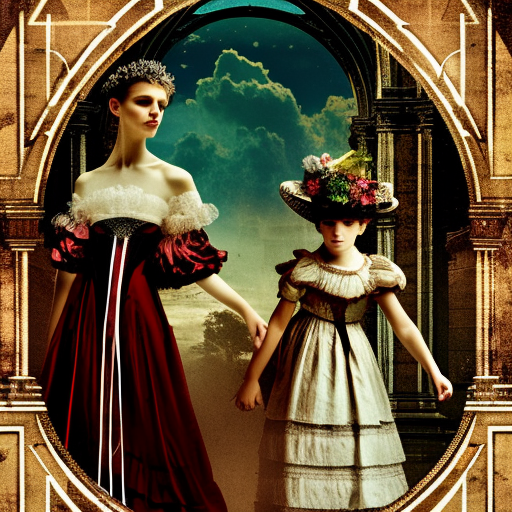The Age of Innocence: A Tale of Love and Conformity in Gilded Age New York
In Edith Wharton’s classic novel, “The Age of Innocence,” we are transported to the upper-class society of Gilded Age New York, where love, duty, and societal expectations collide. Set in the 1870s, the story follows Newland Archer, a young lawyer torn between his passion for the unconventional Countess Ellen Olenska and his commitment to the traditional values of his social circle. Through vivid descriptions and insightful observations, Wharton explores themes of love, sacrifice, and the constraints of societal norms.
A World of Social Conventions and Expectations
In this tightly knit society, appearances and maintaining the status quo are of utmost importance. Newland Archer, a member of the old New York aristocracy, is engaged to the beautiful and proper May Welland. However, when May’s cousin, the Countess Ellen Olenska, returns to New York after separating from her abusive husband, she disrupts the delicate balance of their world. Ellen is seen as scandalous and unconventional, and her presence challenges the rigid social conventions that govern their lives.
As Newland becomes increasingly drawn to Ellen’s free-spirited nature and independent thinking, he finds himself torn between his desire for her and his duty to conform to the expectations of his society. The novel explores the suffocating nature of societal norms and the sacrifices individuals must make to maintain their place in this world.
A Forbidden Love and the Consequences of Choice
As Newland and Ellen’s connection deepens, they are faced with the difficult decision of whether to pursue their love or to conform to the expectations of their society. Newland is torn between his desire for a passionate and unconventional life with Ellen and the fear of losing his place in society. Ultimately, he chooses to marry May, sacrificing his own happiness for the sake of conformity.
The consequences of this choice reverberate throughout the novel, as Newland and May’s marriage becomes a symbol of the stifling conformity and unfulfilled desires that plague their society. Wharton masterfully portrays the internal struggle faced by individuals torn between their own desires and the expectations of those around them.
The Tragic Irony of Lost Opportunities
“The Age of Innocence” is a poignant exploration of the tragic irony of lost opportunities. Wharton highlights the price individuals pay for adhering to societal expectations and the regret that comes from not following one’s heart. Through Newland’s perspective, we witness the missed chances for love and fulfillment that result from the rigid adherence to social norms.
As the novel unfolds, we see the characters grappling with the consequences of their choices and the realization that they can never recapture the innocence and passion of their youth. Wharton’s portrayal of this bittersweet reality serves as a cautionary tale about the dangers of conforming to societal expectations at the expense of personal happiness.
Key Takeaways:
- Love and passion often clash with societal expectations and conventions.
- The pursuit of conformity can lead to missed opportunities and unfulfilled desires.
- Regret and longing are the consequences of sacrificing personal happiness for societal acceptance.
“Each time you happen to me all over again.”
– Edith Wharton, The Age of Innocence
In “The Age of Innocence,” Edith Wharton paints a vivid picture of Gilded Age New York and the struggles faced by individuals caught between their desires and the expectations of society. Through the story of Newland Archer and his forbidden love for Countess Ellen Olenska, Wharton explores themes of love, sacrifice, and the suffocating nature of societal norms. This timeless novel serves as a reminder of the importance of following one’s heart and the tragic consequences of conforming to societal expectations.












